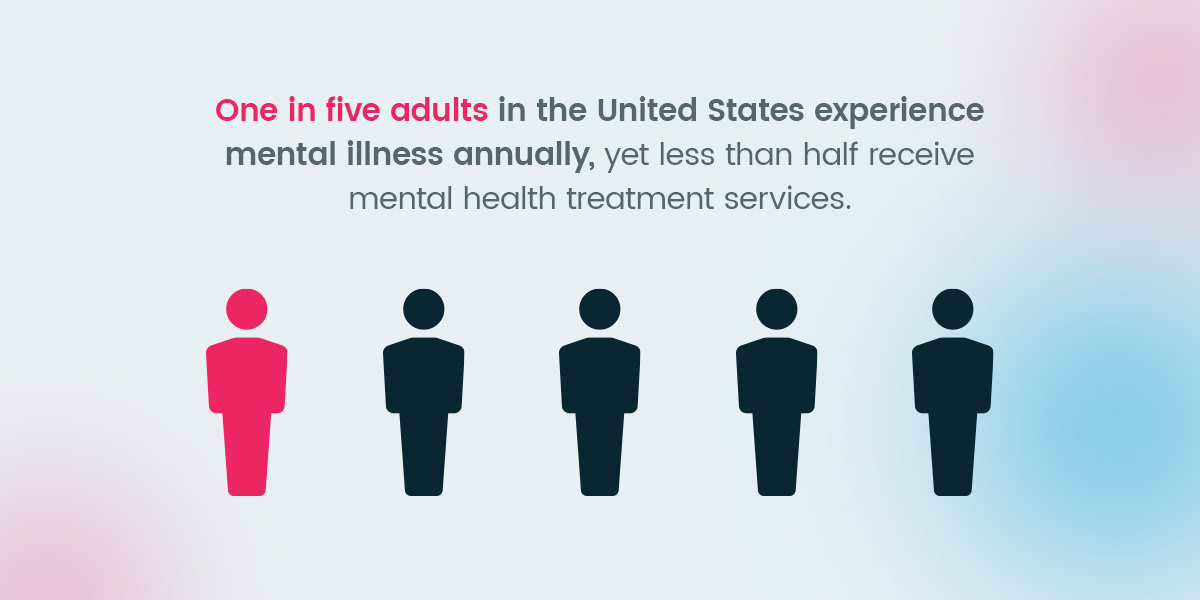

Accessible quality mental healthcare is essential for all communities. Millions of people face mental health challenges every day, and mental health services and treatment can significantly impact a person’s overall health and wellness. These services bring communities together and empower individuals to live their most fulfilling lives.
Geofencing is an excellent tool that practices can use for targeting new and existing mental health patients and clients. In this article, you will learn more about geofencing, including how to leverage this technology to benefit your organization and the best practices for implementation.
Geofencing refers to location-based technology that creates a virtual perimeter around a specific area. This software utilizes coordinates or a center point to digitally mark a desired location. Using cellular data, GPS, RFID or a Wi-Fi connection, this technology can trigger particular mobile device actions when people enter the defined location.
This marketing strategy empowers users to reach their target audience and engage with them to promote brands and services. In healthcare, these locations are often clinics, hospitals and other service facilities. The programmed actions can include sending information such as targeted notifications on services or appointment openings.
The healthcare industry uses geofencing to enhance the client or patient experience in several ways. Facilities can use geofencing technology to help with community outreach to find new patients, general healthcare awareness that highlights the importance of visits, sending reminders for appointments and checkups, and so much more. Healthcare facilities can also use geofencing to send information to employees, referring physicians, stakeholders and other professionals, such as conference attendees.
Implementing geofencing into your mental health service marketing strategy can empower you to leverage real-time data to promote appointment openings, essential services and personalized notifications. Healthcare providers can use geofencing to:

Geofencing offers a wide range of benefits across industries. This targeted and location-based marketing strategy empowers organizations of all kinds to captivate audiences and deliver personalized messages to engage current and growing audience bases. Provider benefits of geofencing include:
Personalized messages and alerts can improve the patient or client experience. Geofencing can enhance communication between your organization and your audience in a convenient way.
Whether you utilize this technology to send department directions, general health tips or individual-specific appointment reminders, you can strengthen your relationship with your audience while providing holistic care and recommendations. You can also leverage geofencing to create a seamless check-in experience, reduce wait times and lessen administrative workloads to deliver the utmost quality of care.
Geofencing enables providers to reach out to potential clients in real time based on their location. By reaching out at the right time, facilities and businesses can attract new audiences to grow their target base.
Nearly everyone could benefit from some type of mental health treatment, whether in the form of therapy, medication or another type of care. Improving your outreach can grow your audience base. It helps ensure individuals know where and how to access the help they need to live their best lives.
A significant advantage of geofencing is its cost-effectiveness compared to traditional marketing methods. Using a hyper-targeted advertising strategy empowers you to send the right messages at the right time, boosting the likelihood of increasing engagement numbers. Geofencing allows you to spend money on attracting the individuals most likely to take action to improve your bottom line.
Healthcare facilities and organizations often rely on data to make informed decisions regarding treatments, care plans, outreach and more. Geofencing is an excellent way to capture essential data, such as types of devices, movement patterns, user locations and the time individuals spend in a specific location.
These insights can pave the way for improvement by highlighting when to send notifications, what types of messages are the most meaningful and how your efforts are performing.
Crafting a successful geofencing strategy involves an effective and efficient implementation. Best practices and tried-and-true methods can guide you to the right solution. Check out these steps for setting up geofencing for your practice:
Creating the fence involves choosing the right platforms and defining your target areas. You will need to determine the latitude, longitude, radius and number of fences, as well as who you are targeting. The more you know about your audience, the better your targeting will be. Segmenting your audience based on interests, browsing behaviors and buying habits can guide your targeting.
Your policy refers to the defined actions you want to perform. You must consider the timing of these actions to avoid spamming users and consider the best messages to send to specific individuals.
During this phase, you will craft messages that speak to the specific audiences you’re targeting. Tracking your campaign will highlight whether your efforts are achieving your goals or if you should revise your strategy.
The last part of the equation is ensuring privacy and data security. As a healthcare professional, you understand the importance of securing and protecting private information. Geofencing complies with HIPAA regulations, but you must be careful when handling data regarding geographical locations.
Furthermore, you must gain consent to store and use location data and allow each user to opt out. Sending ads after an individual leaves a medical facility could be seen as targeting based on health information.
Geofencing is just one way your mental health organization can deliver personalized patient experiences. When you need comprehensive technology for patient engagement, trust Mend to deliver a simplified solution.
Mend offers modern features including digital check-in, self-scheduling, automated payments, appointment reminders and more. To discover how Mend can transform your organization, reach out to learn more today.